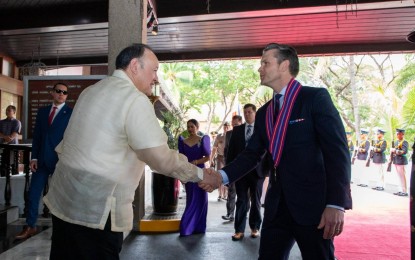By Ruth Abbey Gita-Carlos
The enhanced defense cooperation between the Philippines and the United States (US) is an “effective” strategy to deter conflict in the West Philippine Sea (WPS), political analysts said recently.
Satellite images obtained by international news agency Reuters showed that China deployed two long-range H-6 bombers this week, near the hotly contested Panatag (Scarborough) Shoal.
On Friday, US Defense Secretary Pete Hegseth met with military and defense officials at Camp Aguinaldo in Quezon City.
At a recent News Forum in Quezon City, De La Salle University Prof. Renato de Castro said the deployment of two Chinese bombers shows that efforts to beef up the military partnership between the Philippines and the US are effective.
De Castro said it is not surprising that China deployed its bombers, in time for Hegseth’s visit to the Philippines.
“The fact that China reacted, proves that the Philippine-US initiative is effective and has affected China. They are simply afraid. They are in fact angry because thet feel threatened. Whether they are afraid or not, however, that’s not part of our business,” he said.
“When it comes to national defense, this is really a sovereign act,” de Castro added.
Geopolitical analyst Don McLain Gill agreed with his fellow La Salle professor, saying China’s latest move is “quite expected.” He said Hegseth’s visit to the country signals the US’ strong commitment to helping the Philippines in its maritime row with China.
“We saw that there is this recognition that we need to deploy more from the US side, more advanced weapon systems to more properly address the emerging threat coming from either the Taiwan side or in the West Philippine Sea side,” Gill said.
“So, in that regard, it is also in the interest of the United States to ensure that their higher defense system is also here,” he added.
In a press briefing after his meeting with Defense Secretary Gilberto Teodoro Jr., Hegseth said the US would deploy additional capabilities or weapons in the Philippines as part of efforts to help deter conflicts in the Indo-Pacific Region.
Hegseth said the US would deploy the Navy-Marine Expeditionary Ship Interdiction System (NMESIS) anti-missile system and highly capable unmanned surface vehicles at the “Balikatan” (shoulder-to-shoulder) military exercise in April.
Hegseth said the systems will allow the US and Philippine troops to train together using advanced capabilities. (PNA)












